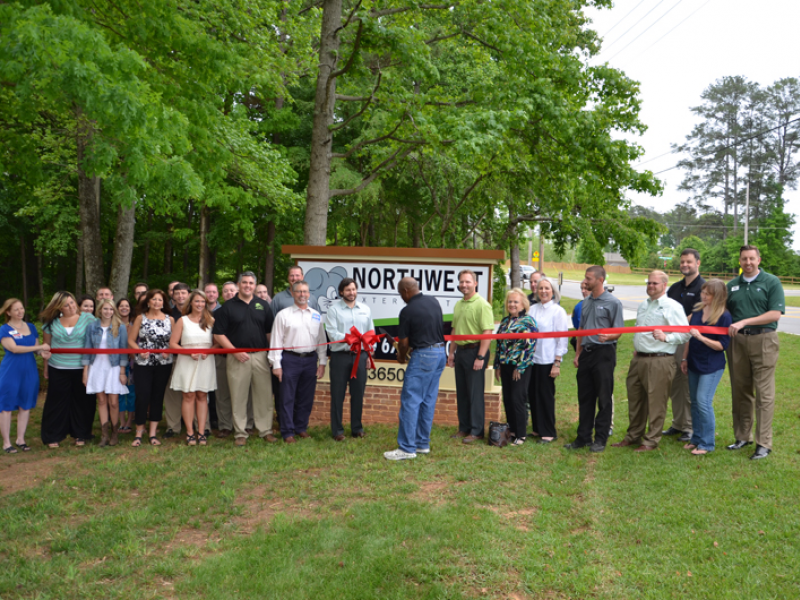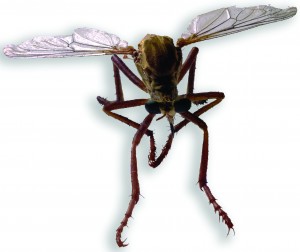READY TO GET STARTED?
REQUEST A FREE ESTIMATE
Fill out the form below or call (888) 466-7849 for a free, no-obligation estimate.
UGA Extension entomologist, Elmer Gray, recently wrote an article explaining why the severe winter weather that we’ve experienced in Georgia, and surrounding states, won’t slow down the insect population. In fact, he explains that spring temperatures and moisture conditions will have a far greater effect on insect populations than winter weather. Some insects will die due to the severe weather but most will survive.
Gray explains that insects, having been around for over 300 million years, are adaptive creatures. They are highly adaptable to their surroundings and can survive in extreme conditions. Many insects also overwinter. In the case of insects, overwintering is basically how they survive during the winter months (or how they receive their basic needs). Many insects go through physiological changes that help them survive cold temperatures.
The main concern for insects is that they avoid ice crystals to form inside of their body.
To read the full article, click HERE.

Marietta, GA – Northwest Exterminating, the Southeast’s leader in “Green” Pest Control, recently opened it’s 19th service center. This new facility is in the city of Acworth, GA and is now the company’s 4th location in Cobb County. At 3650 New McEver Road, the new service center is conveniently located near the historic downtowns of both Kennesaw and Acworth. Once plans for the new office were solidified in 2013, several company committee members were ready and eager to get started on the new service center. The doors were officially opened on Thursday, January 09, 2014.
Northwest has serviced customers in Acworth and its surrounding areas since 1951 and is excited for the opportunity to provide a greater presence within the community as a whole. The foundation of the company’s core values is to put customer’s first. As a result, Northwest Exterminating continues to realize its vision of growth and is proud of its firm standing within the pest control market.
About Northwest Exterminating
Northwest Exterminating is a family owned and operated exterminating company. It was established in 1951 by the husband and wife team of L.A. Phillips and Emma Lene Phillips. The company was founded on the values of honesty, integrity, and excellence. Today these values still remain the core principals of Northwest Exterminating. The company has grown from a family of 2 to a family of over 300 team members and multiple service centers throughout Georgia and Tennessee, while also servicing South Carolina and Alabama. We specialize in residential and commercial termite control, pest control, mosquito control, wildlife services, lawn care, and insulation.
For more information on Northwest Exterminating, our services, and our locations that service Georgia, Tennessee, Alabama, and South Carolina, visit us at callnorthwest.com.
It’s a great feeling when you get a new car. The new smell, the way it drives, the features, the ants….wait, THE ANTS?!?! Luckily, ants don’t usually come standard with a car purchase. But for Josh Wise, that MAY have just been the case.
Josh’s truck, that he uses for his landscaping business, has been taken over by ghost ants. Ghost ants are extremely small ants (1.3-1.5mm long) that reproduce in high numbers. This species of ant is found in Florida and is the first documented case in Georgia. Although Josh purchased his truck here in Georgia, the Georgia dealership had originally purchased the truck from a dealership in Florida…hmmm.
Were the ants already in the truck when it came from Florida? Did the ants invade in Georgia? Did they come from plants that were put in his truck?
Check out the video:
For more information on ghost ants visit University of Florida IFAS
Good news…we’re no longer in a drought!!
Bad news…thanks to all of the record breaking rain, we have record amounts of pests, especially mosquitoes!
 Moisture is known to attract pests. They, like humans, need moisture to survive. So it’s no surprise that with the large amount of rain we’ve gotten this year that mosquitoes have become a major issue for Georgia residents.
Moisture is known to attract pests. They, like humans, need moisture to survive. So it’s no surprise that with the large amount of rain we’ve gotten this year that mosquitoes have become a major issue for Georgia residents.
Georgia is no stranger to mosquitoes. Between standing water (lakes, ponds, creeks, even standing water in your yard) and the local vegetation, we are accustomed to this issue. While some residents turn to DIY options, those aren’t always effective. Going to the local hardware store and picking out a product from the shelves may help short term but will not get to the source of the mosquito infestation.
Northwest Exterminating’s Green Mosquito Control provides monthly mosquito treatments by a licensed professional. Our professionals are knowledgeable about the products they are using, what attracts mosquitoes, and the process of keeping them away. Our professional exterminators will inspect the property and identify the source of the breeding and nesting areas. After they’ve determined these areas they are able to apply an environmentally friendly product derived from flowers and bacteria.
For tips on ways to reduce mosquitoes visit HERE.
For more information on Northwest Exterminating’s Green Mosquito Control call 888.466.7849 or visit us online at www.callnorthwest.com
Northwest’s Wildlife Services Team specializes in the exclusion, removal, and control of animal nuisances. Among our specialties are squirrels, rodents, raccoons, opossums, bees, armadillos, and chipmunks. An important wildlife service in the coming warm months is our snake removal! Our Wildlife team uses a Green product that is used to deter snakes. We also spend a great deal of time educating the customer on snakes.
Georgia is among the states with the highest biodiversity of snakes in the U.S. with 43 different species. They are located anywhere in Georgia from the mountains in the north to the barrier islands along our eastern coast. Below we have pictures and descriptions of the most common venomous snakes. If you spot one of these, call our Wildlife Services Team at 770.436.3362 to get them off your hands, or better yet, remove them very far away from your hands!
Copperheads are fairly large – anywhere from 2 to over 3 feet long! They have brown, triangular heads and elliptical pupils. You likely won’t want to get close enough to be sure, but they have two tiny dots at the center of the top of the head. More distinguishing features include yellow tails for juvenile snakes, and the brown bands that run along their body are in a distinct hourglass shape. They are found mostly in the forested areas of Georgia and South Carolina.
Just like copperheads, cottonmouths have large, triangular heads with elliptical pupils. They get the name water moccasin from their semi-aquatic nature and are likely to be found by mostly all types of freshwater habitats. These are more difficult to identify by appearance because they have a wide range of colors but tend to feature colors that will camouflage them into their habitats.
Eastern diamondbacks are among the largest of 32 species of rattlesnakes, ranging anywhere from 2.75 feet to 6 feet long. They have large, broad heads with two light lines on their faces. These are easily recognized by their brown diamonds, surrounded by lighter colored brown, tan or yellowish scales. They can be located anywhere from the southern part of North Carolina, but especially in South Georgia and Florida. They like to be in drier, sandy or low cut grass areas and tend to avoid wetter areas, though they are great swimmers and even travel through saltwater!
These snakes tend to range from about 3-5 feet in length and are usually gray with a pink, yellow, orange or brown stripe running along their back. They have solid black tails and black chevrons along the back and sides of their body with the point of the (V) pointing forward. They are found in most of the eastern United States, but are somewhat absent from Florida. They can be found in a wide range of areas, but are least likely to be found in highly urbanized or residential areas.
This rattlesnake is on the smaller side, usually coming in at under 2 feet in length. This snake has 9 large scales on the top of it’s head and a tiny rattle that can rarely be heard. They have a row of mid-dorsal spots and a bar from the eye to their mouth that ranges from black to brownish. The name is deceptive as they can be gray, tan, lavender, orange, red, or even black. These are mostly located from central Georgia up throughout South Carolina. They also like to be near water sources like creeks, marshes, and swamps.
“Red on yellow, kills a fellow. Red on black, friend of Jack.” These snakes are sometimes up to 4 feet in length with smooth heads with a bright body pattern of black rings in which the red and yellow rings touch each other. These are sometimes confused with king snakes, but these snakes only have the red touching the black rings and are not venomous. These snakes are found all the way from Louisiana to Florida, where they are most prevalent. They are rarely spotted because they hide under ground and spend only a limited time crawling above ground. Unfortunately, because of these secretive habits, coral snakes tend to persist in suburban areas.
Melissa Brown
[email protected]
Sources:
http://georgiawildlife.com/node/497
https://uga.edu/srelherp/snakes/index.htm
http://srelherp.uga.edu/snakes/pics/agkcon210.jpg
http://srelherp.uga.edu/snakes/pics/agkpis210.jpg
http://srelherp.uga.edu/snakes/pics/agkpis4.jpg
http://srelherp.uga.edu/snakes/pics/croada210.jpg
http://srelherp.uga.edu/snakes/pics/crohor3.jpg
http://srelherp.uga.edu/snakes/pics/sismil210.jpg
http://www.petmd.com/sites/default/files/coral_snake.gif